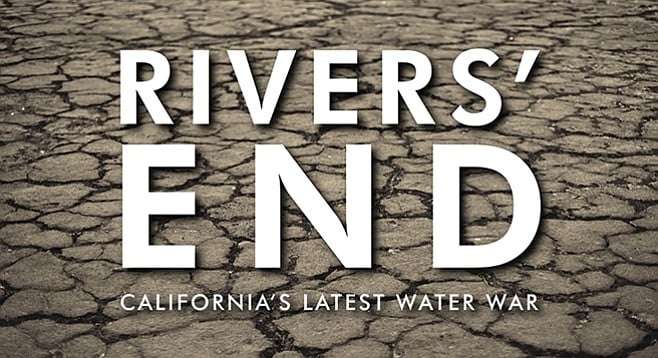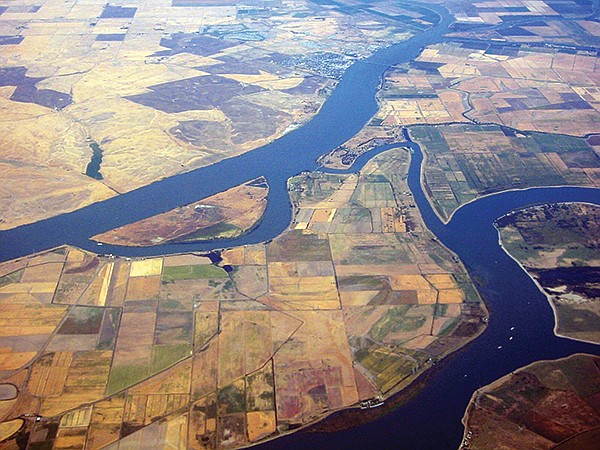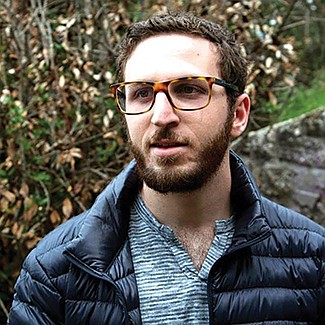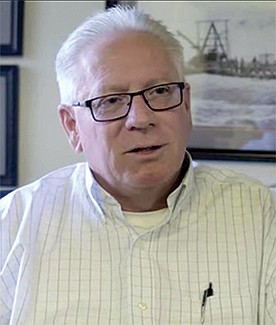 Facebook
Facebook
 X
X
 Instagram
Instagram
 TikTok
TikTok
 Youtube
Youtube

The California water wars are being fought on multiple fronts: thirsty cities against farmers, north against south, farmers against environmentalists, conservatives against liberals, some homeowners against Governor Jerry Brown’s plan to fix the problems, and farmers and cities against the tiny delta smelt, the salmon, and the environmentalists who stick up for them.

The delta in question is the Northern California area in which the San Joaquin and Sacramento rivers meet. It is 1100 square miles of islands, farmland, levees, pumps, and recreation areas put in place by both state and federal projects. It is the nexus of the state’s water system, supplying water to central and southern areas of the state. The water gets to major metropolitan areas in Southern California. Some of it is transferred to San Diego County.
The drought has drastically reduced the amount of water available and set the various factions against one another. An upcoming El Niño may ease hostilities a bit.

Jacob Morrison is a Carmel Valley resident and film student at the University of Southern California. When not making movies, he can be seen hiking and kayaking in the La Jolla area. Along with a group of producers, he is making a documentary, Rivers’ End, which warns that California’s rivers will eventually go dry.

The documentary, for which Morrison is trying to raise funds, is billed as “an inside look into the worst drought in California’s recorded history.”
Actually, the current drought may turn out to be much worse than simply the worst in California’s recorded history. In the movie’s trailer, Kelly Sanders, an assistant professor of engineering at USC specializing in water issues, says that the drought could possibly last 200 years — a warning that paleoclimatologists often give. Some writers go several steps further, saying that much of California, Arizona, and Nevada will return to desert as people are forced to flee dust bowl conditions.
“The film will not say that people have to move from the state, even though I do believe that we were naive to attempt to settle and farm the desert,” says Morrison.
“In 50 to 100 years, we are on track to not have rivers and not have fish,” he says. “This is due to our lack of trying to solve the problem in a drought state. The current mentality is to squeeze whatever water we can out of a system, even when it is not there. And this mentality and lack of planning, if continued, will be the end of our bodies of water and their ecosystems.”

The documentary will rely heavily on interviews with a number of experts, one of whom is John Herrick, general counsel and manager of the South Delta Water Agency in Stockton.
“The rivers will potentially dry up for a number of reasons,” says Herrick. “The current drought shows us that the operations of the state and federal projects… do not include multiyear drought planning.” If the projects can’t meet minimum flow obligations in the current short-lived (thus far) drought, “It is only a matter of time until a long drought results in no water in the rivers.” Dams control the water that is allowed to enter the rivers. “They will reach a point when they cannot or will not release the dwindling supply.”
The problem, says Herrick, is exportation of the water — say, to residences in Southern California. Proposals to change the current allocations are “efforts by the have-nots to take water from the haves,” he says. Laws and the state constitution have set up a priority water system. In a severe drought such as the present one, the state’s emergency powers permit officials to reallocate water. The state will then reroute agricultural water to municipalities. “Taking the farmer’s property rights to the water because someone else wants it is called theft,” says Herrick.
Carly Fiorina, a businesswoman who is a Republican presidential candidate, has charged that the drought is a “man-made human tragedy” caused by “overzealous liberal environmentalists” who “have prevented the building of a single new reservoir or a single new water conveyance system over decades during a period in which California’s population has doubled.”
On July 16, the House of Representatives passed a bill that attempts to get back at the smelt, the salmon, and their environmentalist protectors. Without erasing the environmental legal protections, the bill would cut back on water supporting endangered fish by building and expanding dams that would provide more water to farmers.
Says Herrick, “The environmental water issue is a straw man argument put forth by those without a [water] supply to justify stealing the water they want.” The basic protections given the smelt are essentially the protections to the estuary itself, says Herrick. Legal protection of the tiny smelt is just a convenient target to dramatize an anti-environmental argument.
Herrick says the politicians, bureaucrats, power brokers, and residential interests “killed the fish and now complain that protecting the fish decreases their supply. Duhhh.”
The state recently released a revised version of Governor Jerry Brown’s $15 billion plan for twin tunnels that would divert water from the Sacramento River under the delta for delivery to farms and cities. The governor’s office says the plan will also restore native habitat to the delta. Morrison says it’s just a scheme to use the governor’s emergency powers to filch water in dry times. “The delta will not receive the water that would normally flow into it,” says Morrison. “When the delta does not have enough water, ocean water flows into it, the salinity levels rise, and the ecosystem crashes.”
The documentary will touch on other matters. For example, California supplies 80 percent of the world’s almonds. And almond growers are among the biggest consumers of state water. But growing alfalfa, which cattle feed on, takes much more water. So dining on a steak and a glass of milk could worsen the state water crisis more than gobbling almonds.
“A single steak or hamburger can take more than 400 gallons of water to produce,” says Morrison. That compares with a gallon of water for one almond. Slowing down cattle production could do far more to save water than taking shorter showers or running the dishwasher less. Alas, “Most people are not yet ready to give up or reduce their beef intake.”


The California water wars are being fought on multiple fronts: thirsty cities against farmers, north against south, farmers against environmentalists, conservatives against liberals, some homeowners against Governor Jerry Brown’s plan to fix the problems, and farmers and cities against the tiny delta smelt, the salmon, and the environmentalists who stick up for them.

The delta in question is the Northern California area in which the San Joaquin and Sacramento rivers meet. It is 1100 square miles of islands, farmland, levees, pumps, and recreation areas put in place by both state and federal projects. It is the nexus of the state’s water system, supplying water to central and southern areas of the state. The water gets to major metropolitan areas in Southern California. Some of it is transferred to San Diego County.
The drought has drastically reduced the amount of water available and set the various factions against one another. An upcoming El Niño may ease hostilities a bit.

Jacob Morrison is a Carmel Valley resident and film student at the University of Southern California. When not making movies, he can be seen hiking and kayaking in the La Jolla area. Along with a group of producers, he is making a documentary, Rivers’ End, which warns that California’s rivers will eventually go dry.

The documentary, for which Morrison is trying to raise funds, is billed as “an inside look into the worst drought in California’s recorded history.”
Actually, the current drought may turn out to be much worse than simply the worst in California’s recorded history. In the movie’s trailer, Kelly Sanders, an assistant professor of engineering at USC specializing in water issues, says that the drought could possibly last 200 years — a warning that paleoclimatologists often give. Some writers go several steps further, saying that much of California, Arizona, and Nevada will return to desert as people are forced to flee dust bowl conditions.
“The film will not say that people have to move from the state, even though I do believe that we were naive to attempt to settle and farm the desert,” says Morrison.
“In 50 to 100 years, we are on track to not have rivers and not have fish,” he says. “This is due to our lack of trying to solve the problem in a drought state. The current mentality is to squeeze whatever water we can out of a system, even when it is not there. And this mentality and lack of planning, if continued, will be the end of our bodies of water and their ecosystems.”

The documentary will rely heavily on interviews with a number of experts, one of whom is John Herrick, general counsel and manager of the South Delta Water Agency in Stockton.
“The rivers will potentially dry up for a number of reasons,” says Herrick. “The current drought shows us that the operations of the state and federal projects… do not include multiyear drought planning.” If the projects can’t meet minimum flow obligations in the current short-lived (thus far) drought, “It is only a matter of time until a long drought results in no water in the rivers.” Dams control the water that is allowed to enter the rivers. “They will reach a point when they cannot or will not release the dwindling supply.”
The problem, says Herrick, is exportation of the water — say, to residences in Southern California. Proposals to change the current allocations are “efforts by the have-nots to take water from the haves,” he says. Laws and the state constitution have set up a priority water system. In a severe drought such as the present one, the state’s emergency powers permit officials to reallocate water. The state will then reroute agricultural water to municipalities. “Taking the farmer’s property rights to the water because someone else wants it is called theft,” says Herrick.
Carly Fiorina, a businesswoman who is a Republican presidential candidate, has charged that the drought is a “man-made human tragedy” caused by “overzealous liberal environmentalists” who “have prevented the building of a single new reservoir or a single new water conveyance system over decades during a period in which California’s population has doubled.”
On July 16, the House of Representatives passed a bill that attempts to get back at the smelt, the salmon, and their environmentalist protectors. Without erasing the environmental legal protections, the bill would cut back on water supporting endangered fish by building and expanding dams that would provide more water to farmers.
Says Herrick, “The environmental water issue is a straw man argument put forth by those without a [water] supply to justify stealing the water they want.” The basic protections given the smelt are essentially the protections to the estuary itself, says Herrick. Legal protection of the tiny smelt is just a convenient target to dramatize an anti-environmental argument.
Herrick says the politicians, bureaucrats, power brokers, and residential interests “killed the fish and now complain that protecting the fish decreases their supply. Duhhh.”
The state recently released a revised version of Governor Jerry Brown’s $15 billion plan for twin tunnels that would divert water from the Sacramento River under the delta for delivery to farms and cities. The governor’s office says the plan will also restore native habitat to the delta. Morrison says it’s just a scheme to use the governor’s emergency powers to filch water in dry times. “The delta will not receive the water that would normally flow into it,” says Morrison. “When the delta does not have enough water, ocean water flows into it, the salinity levels rise, and the ecosystem crashes.”
The documentary will touch on other matters. For example, California supplies 80 percent of the world’s almonds. And almond growers are among the biggest consumers of state water. But growing alfalfa, which cattle feed on, takes much more water. So dining on a steak and a glass of milk could worsen the state water crisis more than gobbling almonds.
“A single steak or hamburger can take more than 400 gallons of water to produce,” says Morrison. That compares with a gallon of water for one almond. Slowing down cattle production could do far more to save water than taking shorter showers or running the dishwasher less. Alas, “Most people are not yet ready to give up or reduce their beef intake.”
Comments